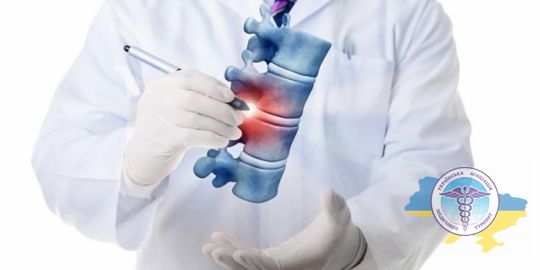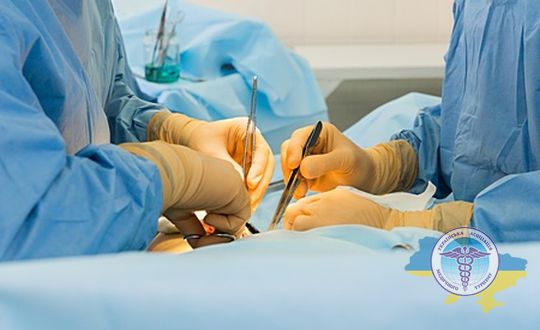Spinal surgery in Israel

Approximately 80% of the world's population has spinal pathologies of varying degrees of complexity. This condition is uncomfortable and painful. It impairs normal movements, the level of their quality of life is significantly deteriorating. Often, the problem can be completely eliminated only after surgery.
Spinal surgery in Israel is a very popular procedure, which allows achieving excellent results in most cases. About 25,000 patients from various countries come to the country every year for spine treatment.
Some people are afraid of such manipulations, thinking that they will be paralyzed after surgery. Such cases happened several decades ago, when spinal surgery as a direction in medicine was just emerging, and the first surgeries were carried out. Since then, science has stepped forward, technologies have improved and the negative effect of this operation on the body is extremely rare.
Important! Spinal surgery combines not only medical practice, but also scientific research. Specialists in this field have knowledge of the basics of neurosurgery, neurology and other disciplines, and are proficient in traumatological techniques.

Want to know how much the treatment costs?
Answer a few questions and get preliminary information about the cost of diagnosis and treatment!
What diseases are treated with spinal surgery procedures?
Israel has everything you need to carry out spinal surgery procedures: world-renowned specialists and the most modern equipment. The country's public health centers and private hospitals treat the widest range of disorders of the musculoskeletal system, including:
- oncology on the spine and vertebral canal;
- herniated disc that occurs in the cervical spine and in the lumbar region;
- spinal stenosis;
- spinal muscular atrophy;
- degenerative-dystrophic pathologies;
- scoliosis and other deformities;
- consequences of vertebral and spinal injuries;
- spondylolisthesis, including anterolisthesis (forward displacement of the vertebrae) and retrolisthesis (backward displacement);
- congenital pathologies;
- pain syndrome.
The advantages of spinal surgery in Israeli clinics
- Highly qualified doctors who underwent training in the best clinics in the USA and the European Union, who have many years of clinical experience and are constantly improving their skills;
- High performance indicators. Israeli clinics provide the maximum full restoration of the mobility of the main part of the skeleton, relieve pain and avoid disability for many patients who could not be helped by doctors at home;
- Effective and safe techniques. The priority of specialists is the organ-preserving approach; instead of open surgical operations, minimally invasive effects are mainly used;
- Modern equipment. The use of the latest equipment makes it possible to make an accurate diagnosis and subsequently eliminate the pathology without damaging healthy tissues;
- Perfect service. Patients are provided with the maximum level of comfort and a personal case manager is assigned to solve all emerging issues;
- Efficiency. Spinal surgery clinics in Israel provide the opportunity to receive medical help as soon as possible after treatment;
- Optimal cost. Compared to similar clinics in the USA and EU countries, with the same level of specialists and equipment, prices for treatment in Israel are significantly lower.
Diagnosis of spine diseases in Israel

The decision to carry out certain procedures and their effective planning are made after a thorough examination of the history and a full array of diagnostic studies.
Great importance is attached to the stage of the examination - the patient's condition is thoroughly checked using modern high-tech equipment, including robotic installations. If necessary, additional consultations of related narrow specialists are appointed.
Spiral computed tomography
This technique is used to visualize the main part of the skeleton and adjacent anatomical structures. As a result of X-ray examination, the state of the vertebrae and intervertebral discs is analyzed, possible diseases (osteochondrosis, spondylosis), trauma, fractures or hernial protrusion are detected.
In the case of a hernia in the area of the intervertebral disc, the degree of narrowing of the canal and compression of the spinal nerve roots is assessed, and the spread of the pathology to the nearest anatomical zones is analyzed.
Electroneuromyography
This examination makes it possible to obtain an informative assessment of the state of the muscles and elements of the nervous system in terms of the functioning of the complex of organs of the musculoskeletal system. The method is based on the registration of electrical signals transmitted along nerve channels and causing muscle contraction.
The study promptly reveals neuralgic problems (radicular syndrome) that subsequently arise from the formation of a herniated disc - the result of compression of the structures of the spinal nerve.
Scintigraphy
The process of radioisotope scanning of bone material in order to detect primary malignant cells or metastases. The check is most relevant for people with cancer problems who feel pain syndrome of an indeterminate nature in the bone structures.
In the absence of a metastatic process, pain can be caused by inflammation or degenerative changes that require specific therapy and the involvement of appropriate specialists.
MRI
Magnetic resonance imaging allows you to examine the soft tissue structures located in the area of the main part of the skeleton. The technique reliably shows the presence of a benign or malignant formation, detects vascular pathologies and congenital disorders.
MRI must be prescribed before surgery. The results of the examination allow us to analyze the degree of development of stenosis, the size of the hernia and protrusion of the disc, compression of the nerve roots. If necessary, the introduction of a contrast agent is applied.
What methods of spinal surgery are used in Israel?
The use of modern methods of spinal surgery in Israel allows you to maintain the performance of the spinal column. The treatment strategy predominantly implies minimally invasive techniques, with the help of which the accessibility of the operating field through a minimum of small-diameter punctures is ensured. The technology provides a high cure rate and virtually eliminates the risk of postoperative complications.
Advice! Such innovative and gentle methods of exposure significantly shorten the period of hospitalization and rehabilitation, which is especially important for patients who came from other countries and do not have local health insurance.
Depending on the diagnosis, various modern methods are used:
Endoscopic microdiscectomy
The procedure is used to remove a herniated vertebral disc. The doctor pierces the skin, inserts the endoscope and instruments. The duration of the intervention does not exceed 1 hour, the anesthesia is local.
Bone tissue, nerve roots and ligaments are not damaged. Within an hour, the patient can walk, the rehabilitation period in the hospital does not exceed 3 days.
Laminectomy
Minimally invasive technology, which results in optimal expansion of the intervertebral canal. The doctor removes part of the bone structure pressing on the nerve roots. After the manipulations, motor functions are normalized, the sensations of pain and numbness of the extremities disappear.
Kyphoplasty
The optimal way to eliminate pain and restore damaged tissues in a compression fracture of the spine. The doctor makes an incision with a diameter of less than 1 cm, inserts a trocar (hollow tube) into it, and through it - a special balloon filled with a contrast agent to restore the normal height of the vertebral body. After the procedure, the balloon is removed, and bone cement is injected into the formed cavity.
Vertebroplasty
The method is aimed at restoring fragmented vertebrae that press on the nerve endings, causing pain. Bone cement is injected into the damaged vertebral structure under local anesthesia.
The duration of the intervention is no more than an hour. Immediately after the cement hardens, the patient can leave the hospital.
Transcutaneous spine stabilization
The method is aimed at fixing the organs of the musculoskeletal system using rods and screws made of titanium. The stabilization material has strength and biological compatibility with human tissues.
The operation is minimaly invasive. The duration of the postoperative recovery period does not exceed 5-7 days.
Nucleotomy
The technology allows you to remove a hernial protrusion of the disc, and eliminate pain arising from pressure on the nerve roots. In the problem area, the surgeon makes a minimal incision without injuring the soft and bone tissues.
Nucleotomy assumes 2 options: laser evaporation of the hernia or its drilling with a rotating spiral. The liquid evaporates due to the influence of the laser, the hernia is retracted, the size of the disc is normalized. Pressure on the processes of nerve cells is eliminated, pain and swelling disappear.
Spinal Fusion Technology
The method is used to stabilize the main part of the skeleton, in which the vertebrae are fastened with titanium screws and plates. Bone implants such as ApiFix can also be used. The hypoallergenic material is durable and has properties that are safe for humans.
The procedure is recommended in cases of prolapse, curvature of the spine or injury. Intervention implies minimal invasion, lasts 2-4 hours, the rehabilitation period lasts no more than a week.
Laser thermodiscoplasty
A strategy aimed at restoring the disc itself and cartilaginous structures by exposing the affected area to a laser. The laser radiation is targeted at the disc, the effect occurs through the needle, therefore there is absolutely no negative effect on the surrounding healthy tissue.
Exposure to the laser leads to cell growth, and the young cartilage tissue completely repairs the damaged disc.
Vertebral prosthetics
If it is impossible to restore the destroyed vertebrae, they are replaced with high-quality implants. A special computer program recreates a 3D model of the vertebra, on the basis of which the shape of the implant is selected to be inserted through a small incision.
The positioning accuracy is controlled by innovative neuronavigation equipment. At the same time, the skeleton retains normal mobility, so a person can lead a normal life.
Operations using "Mazor X stealth addition" technology
For this procedure, a unique device developed by Israeli specialists is used. So far, this is the only such installation in Israel, acquired in May 2021 by the Hadassah Medical Center.
During the operation of this robotic installation, both computer navigation systems are synchronized (previously they worked separately). The result of the work of the innovative technology is the simplification of performing surgical procedures, increasing their safety and accuracy.
How is the preparation for spinal surgery carried out?

A person is examined on the arrival at the hospital. Before spinal surgery in Israel, complex examination is performed, including various examinations (CT, X-ray, MRI, etc.).
Based on the results of the examination, during the consultation with the doctor, the treatment tactics are agreed and, based on the results of laboratory studies, the possible or necessary participation of narrow specialists in the field of oncology, as well as a rheumatologist, neurologist, etc., is discussed.
Before the surgical intervention, anesthesiologist talks to the patient, and selects the optimal dosages and the type of drugs, taking into account the possible risks.
In order to prevent possible complications (blood clots, inflammatory processes), appropriate medications may be prescribed.
Then, a direct surgical intervention is carried out, ending with a recovery period and mandatory rehabilitation, which normalizes the work of the spine and eliminates pain. The length of the rehabilitation period depends on the diagnosis, size and complexity of the pathology.
Spine surgery cost in Israel
The cost of services is formed on the basis of many factors, which is why it is rather difficult to name the total amount before the patient has passed the necessary examinations.
The price is influenced by the peculiarity of the clinical picture, because even with the same diagnoses, treatment methods are selected taking into account the individual parameters and characteristics of each patient. Also, the cost is influenced by the level of qualification of the surgeon, the duration of the period of hospitalization and rehabilitation measures.
It can be said that the cost of spinal surgery in Israel is about 30-45% lower than in similar hospitals in the USA and the European Union.
Approximate price list for demanded procedures:
- consultation - $ 590-1000;
- removal of a hernia - from $ 17,200;
- MRI scan for one spine - from $ 1250;
- surgical treatment of scoliosis - from $ 36300;
- discectomy - from $ 17,500;
- laminectomy - from $ 14,600.



